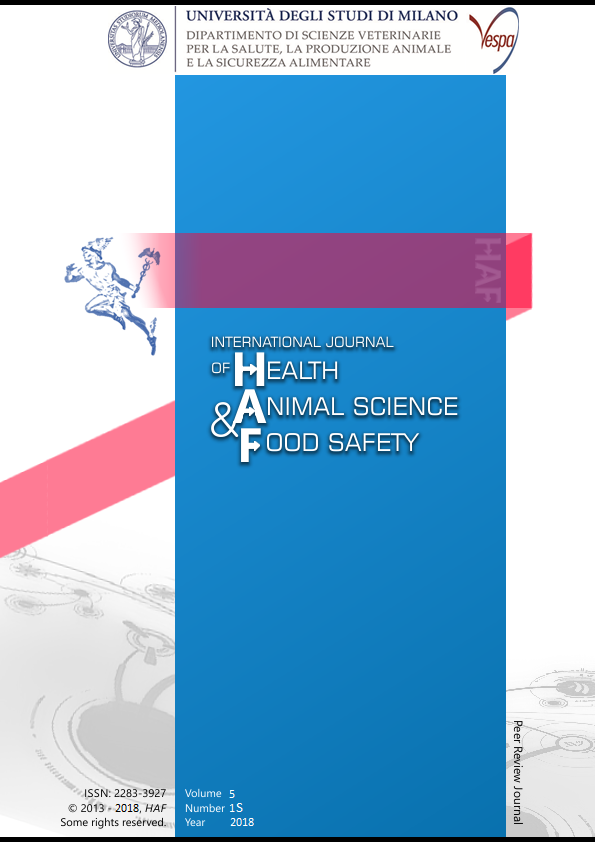Abstract
Genetic selection of dairy cattle has classically been based on fertility and productivity (kilograms of milk, protein, fat). In recent years a growing interest in characters related to health and efficiency of the animals has taken hold. The selection of animals with a high feed efficiency can bring benefits in terms of health, productivity and environmental impact. A first batch of 16 Holstein heifers (mean age 12.63 ± 2.90 months) was selected and housed in a tie-stall of the Centro Zootecnico Didattico Sperimentale (CZDS) of Lodi for the whole length of the trial (35 days). Blood samples were collected and sent to the lab to perform genotyping of the animals. Heifers were fed a composed ration of sorghum silage and total mixed ration, delivered daily on individual feeders to ensure each animal continuous access to the feed. Animals had free access to the water. Feed intake was obtained weighing the supplied ration and the residual the day after. Individual body weight (BW), body condition score (BCS), hearth girth (HG) and height at the wither (W) were measured weekly. Feed Conversion Ratio (FCR) and Residual Feed Intake (RFI) were calculated using Dry Matter Intake (DMI) data. Fecal samples were collected weekly to assess any relation between feed efficiency and acidic profile of the feces. Preliminary results show an average daily gain of 941 ± 206 grams, an increase of mean BW from 374.63 ± 17.06 (day 0) to 407.56 ± 17.06 kilograms (day 34), an increase of mean BCS from 3.97 ± 0.11 (day 0) to 4.19 ± 0.11 (day 34), an increase of mean HG from 169.25 ± 2.83 (day 0) to 177.41 ± 2.83 centimeters (day 34), an increase of mean W from 127.28 ± 1.23 (day 0) to 132.69 ± 1.23 centimeters (day 34).
Riferimenti bibliografici
Rodríguez-Carrio J, Salazar N, Margolles A, González S, Gueimonde M, de los Reyes-Gavilán CG, Suárez A. 2017. Free Fatty Acids Profiles Are Related to Gut Microbiota Signatures and Short-Chain Fatty Acids. Frontiers in Immunology 8: 823.
Waghorn GC, Macdonald KA, Williams Y, Davis SR, Spelman RJ. 2012. Measuring residual feed intake in dairy heifers fed an alfalfa (Medicago sativa) cube diet. Journal of Dairy Science 95(3):1462-71.
Weller JI, Ezra E, Ron M. 2017. Invited review: A perspective on the future of genomic selection in dairy cattle. Journal of Dairy Science 100(11): 8633-44.
This work is licensed under a CC BY-SA 4.0 international

